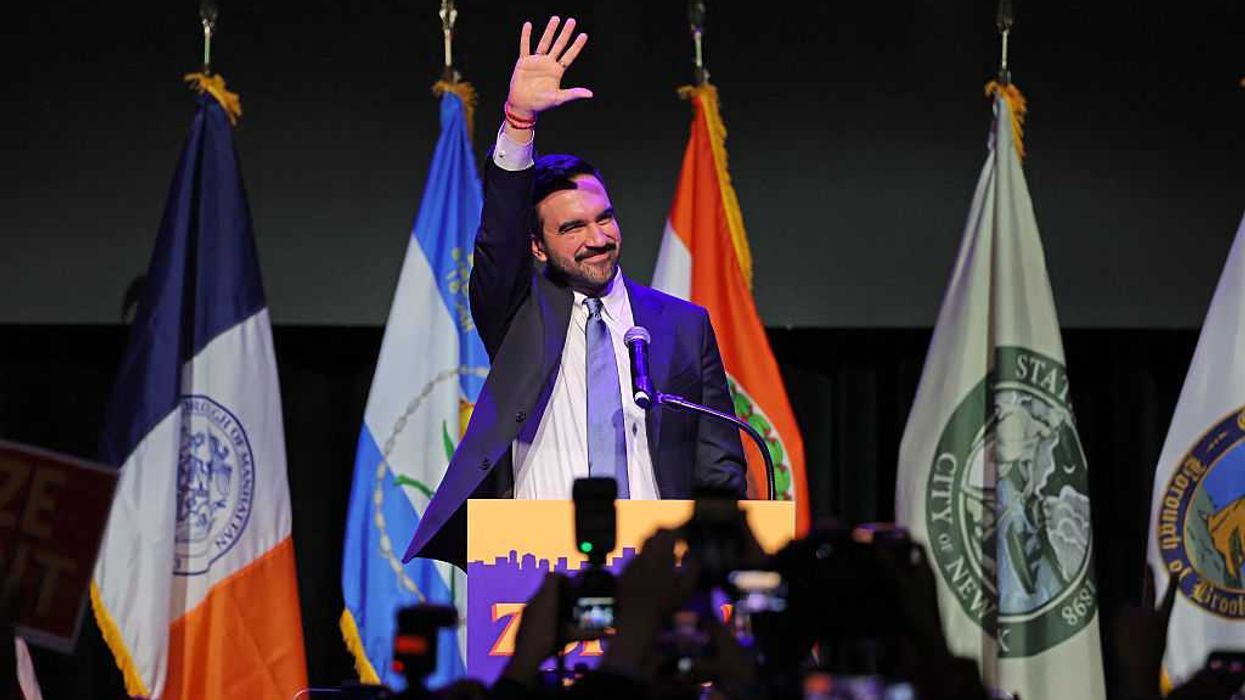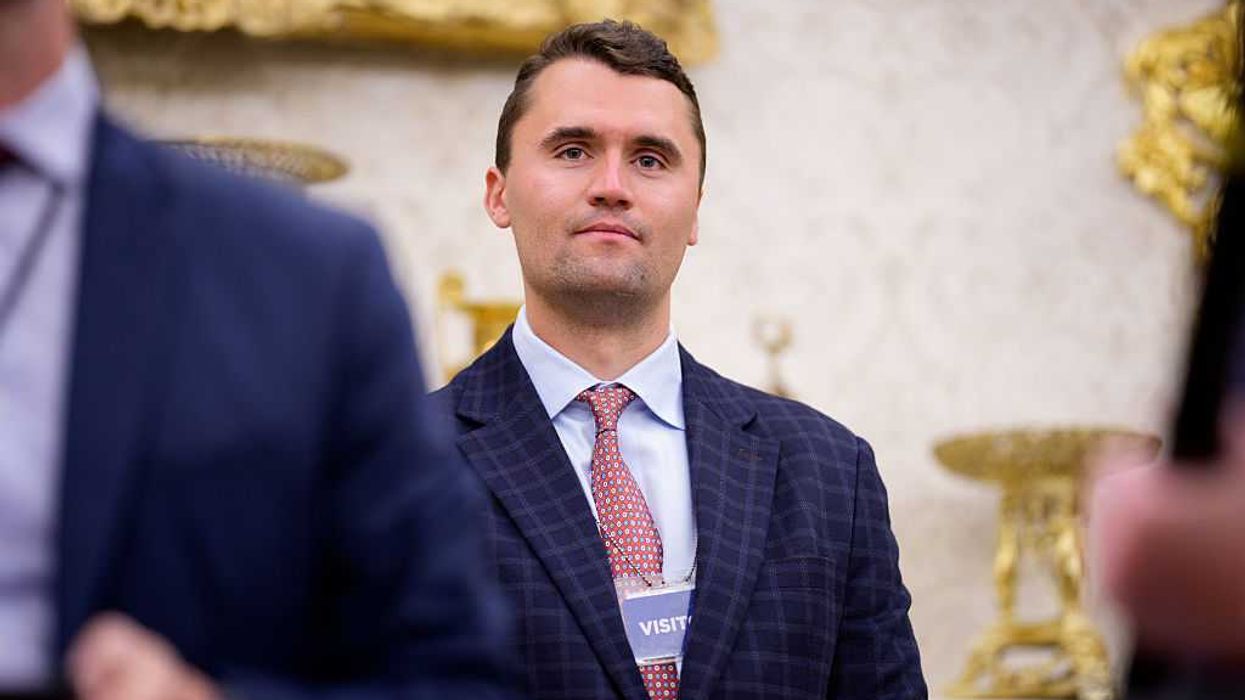by Meg Storm
Read Part 1, Part 2, Part 3, Part 4, Part 5
Ever wonder what goes on behind the scenes at Mercury Radio Arts? Just how do all of Glenn’s crazy ideas get done? Does anyone ever get a chance to sleep? Well, over the next few months we are going to take you inside MRA, giving you the inside scoop on everything from publishing to special events, 1791 to Markdown to GBTV. We will be interviewing members of our New York, Columbus, and Dallas staff, bringing you all the info, so you can know what it’s really like to work for Glenn. Part 1 (Kevin Balfe – Publishing), Part 2 (Liz Julis – GBTV/Special Events), Part 3 (Joel Cheatwood: CCO & President of TheBlaze), Part 4 (Eric Pearce: VP, TV Operation of TheBlaze), Part 5 (Michelle Vanderhoff Network Operations Manager at TheBlaze)
In the wake of what proved to be a truly historic week of service and charity, we sat down with Glenn to get his thoughts on how Restoring Love completes the Restoring trilogy he began two years ago in Washington D.C., how he feels coming out of this remarkable chapter of his life, and what comes next.
Keeping a sold out audience at Dallas Cowboys Stadium entertained for upwards of two hours is no easy task. Not only was Glenn the first person to ever sell out the stadium with a ‘spoken word’ event (i.e. not a football game or concert), he was experimenting with a show format that hasn’t really been tried before.
The cornerstone of the event was Glenn’s keynote speech – a 45 minute address he delivered with the help of an orchestra and original score. “I think we started working on that speech – I don’t even know – five months ago,” Glenn said. “That was draft 14, I think. It was always pretty much in that form from the beginning.”
The speech at Cowboys Stadium was incredibly unique not only because of its content, but because of the music that accompanied it. Composer Clyde Bawden worked alongside Glenn for months as the speech went through its many drafts to ensure that the music fit the theme and tone of the of Glenn’s words at all times.
But the musical score that played such an instrumental role in communicating the message of his speech almost didn’t happen. “There was a disagreement even two weeks before the event that the piano should never play while I am on stage talking and doing things,” Glenn recalled. “People said the orchestra would be too loud behind me, and it would be too confusing for the audience. That’s why there were subtitles up on the screen because I tried to overcome everybody’s objections.”
Despite the staff’s initial concerns, there was a method to Glenn’s madness. “The theory behind it was to make one solid experience,” he explained. “As I kept saying to the crew, it’s like a good message therapist. They will never take the hand off the body. They might stop messaging for a while, but they leave the hand on the body. That’s what I wanted the musicians to do – always leave the music on stage, so you always felt that music going. We wanted to make it nonstop.”
Beyond the grandness of the speech, perhaps the most impressive part of Saturday night’s event was Glenn’s ability to seamlessly tie together a theme that was three years in the making. The seeds that he planted two summers ago on the National Mall in Washington D.C. and continued in Israel last year now had a context even bigger than anything Glenn and his audience could have ever imagined.
“The hardest part of that speech was tying the entire show together, which we had never done before,” he explained. “I mean we have always had an overview, but I have never spent the time on every single piece myself.”
In the wake of previous events, Glenn has been open about his concerns: Did he say everything he was supposed to say? Did he give the audience everything they deserved? But unlike Restoring Honor and Restoring Courage, Restoring Love was nearly a year in the making, and from early on he knew exactly what he needed to say and how he need to say it.
The message was clear from the beginning: people are good. Over 30,000 from around the world would not put their lives on hold, sacrificing vacations and extra income to come to Dallas and serve others if they were not intrinsically good. The biggest complaint of the weekend was not that there was too much work to be done, but that there was not enough – people were willing to do more than their four hour service shift.
“The message really was: we’re good. People are good. We are not who they say we are. We’re not a bunch of losers,” Glenn said. “We are not hateful people. We want to help. We will help.”
Service, which was the primary focus of the weekend, also played a big role in Glenn’s speech. “This is who we are. This is what we were taught. When we see someone hungry, we will give them food. When we see somebody hurting, we will give them help. We are Americans. We are builders. We are helpers,” Glenn told the crowd. “And if there’s one thing our government must NOT do it’s this: Don’t stop us. Don’t stop us from helping. Don’t stop us from feeding. We will serve.”
Glenn made it clear that getting this country back on track will require each of us to serve one another. “Service is good. That’s the way to fix the country,” he said. “It was a message to America that we are on the right track. We are doing the right things. God is with us. The miracles have already begun. God is with us, just keep going.”
The speech had another theme – one that was intended to speak to the people who had traveled from around the world to attend the event. “And then there was a secondary message to the people of Europe who had come, and the 20 nations around the world,” Glenn explained. “This is what made America great. We are not going to preach this to you. We are not going to try to export it. You take it. It is just an idea. And that is secret to our freedom, and it will be to theirs as well.”
The crowd’s response to Glenn’s words was nothing short of incredible, but there is no denying that one moment stood out slightly more than the rest. “The moment of ‘Witness the Third Great Awakening’ was one of the coolest things I have ever been a part of in my entire life,” Glenn said smiling. “The spirit was so powerful. It just testified that it was absolutely true.”
That moment in the speech became a rallying cry, bringing the audience to its feet and uniting them in cause and in spirit. “I know this: America is not done,” Glenn told the electrified crowd. “And if you are watching this broadcast in a distant foreign land and looking for American weakness, looking for surrender, look at this crowd and know that we are putting you on notice. Witness the Third Great Awakening! Your time has passed, and our time has just begun! Let this be the beginning. Commit and declare it for all to hear… Let this be the first of many. It’s not over. We have not yet begun to restore ourselves and reclaim our country.”
By the end of the program, the consensus was simple: the show was unlike anything anyone had ever seen before. The fusion of history, entertainment, and enlightenment made it clear that exciting times are ahead and, with a bit of hard work, the best is yet to come.
“But that was the point of this experiment, if you will,” Glenn said. “The theatrical part of this was a proving ground for the experiment that I am going to do next year.”
“I think we created a new art form, and we have only just begun,” he continued. “Wait until you see what we do with film, pyrotechnics, water, and an orchestra next year.”
It looks like we have officially been warned…
Music played a huge role in the Restoring Love program and will be central to Glenn’s mission to restore our culture. Tomorrow we talk to Glenn about the importance of music to the show and where he found his inspiration.


 ANGELA WEISS / Contributor | Getty Images
ANGELA WEISS / Contributor | Getty Images
 Eric Lee / Stringer | Getty Images
Eric Lee / Stringer | Getty Images Andrew Harnik / Staff | Getty Images
Andrew Harnik / Staff | Getty Images